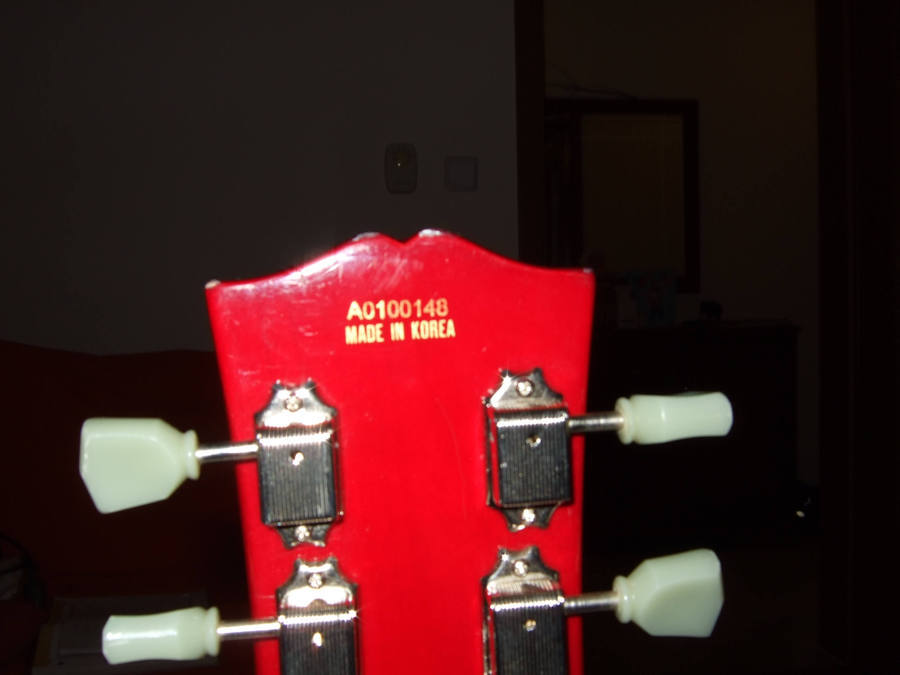Japanese Epiphone Guitar Serial Numbers
Charlie, if this has been posted before please delete it or move it. There are 4 distinct 'eras' of Epiphone: A) House of Stathopoulo (1873 - 1957); B) Gibson Kalamazoo (1957 - 1970); C) Japanese (1970 - 1983); D) Korean (1983 - Present); The original Epiphone factory was in New York, when the company was owned and operated by the Stathopoulo family. That was the era of the legendary archtops like the Regent, Broadway, Deluxe, etc. In 1957, Epiphone was tenuously clinging to existence; the company had been bought out by the C.G. Conn company (best known for band and orchestral instruments), and was all but out of business.
Gibson President Ted McCarty (who recently passed away; R.I.P., Ted) negotiated a deal to buy out Epiphone's upright bass business, but when the equipment was moved to Gibson's Kalamazoo factory, McCarty found out that.all. of Epiphone's equipment, tooling, and parts inventory had been included. That led to Gibson building Epiphones in the Gibson factory; the first few years (1958-61), Gibson used up all the old parts, and in the early 60's, used Gibson parts. This worked well for both Gibson and Epiphone, because it allowed music dealers who couldn't get an official Gibson franchise (which were.very.

Epiphone Year By Serial Number
strictly enforced in those days) to get an Epiphone (which had become a quasi-Gibson) franchise instead. In 1969, Norlin Industries bought the Chicago Musical Instrument company (which owned Gibson at the time), which heralded the 'Dreaded Norlin Era' at Gibson, in which the quality declined greatly. Epiphone production was contracted to companies in Japan in order to cut costs. The Japanese Epis are good guitars, but they suffered both the 'Made in Japan' and 'Norlin' stigmas; they've always been under-rated as a result. In 1983, around the time that Gibson was bought by a group headed by Henry Juszkiewicz (now President of Gibson USA), Epiphone production was contracted to Korean companies, most notably Samick (of which Epiphone/Gibson owns a significant percentage).
With some exceptions, Epiphones are made in Korea to this day. Most Epiphones can be dated fairly accurately by their serial numbers. The exception to this is the Japanese-era guitars; the serial numbering doesn't seem to have followed any sequential pattern from year to year, which makes it.very.

Dating japanese epiphones. Epiphone Serial Number -: Guitars, Lessons Example: F21234 = Fuji-gen Japan / 2002 / unit 1234 Example: T101234 = Terada Japan / 2010 5 Sep 2012 He'd taken in a guitar on trade-a semi-hollow electric Epiphone was as much as he Since I was having a hard time.
Epiphone Serial Numbers Search
Hi, I'm a newbie and also trying to determine if the Emperor I purchased is actually MIJ. It does have the sticker Made in Japan label on the back of the head stock, but I've never seen this on any other. Also guitar dating sites don't recognize the serial number. It does have a three piece neck. Any insights are appreciated. No letter beginning the serial number = FujiGen Factory-built. *Y = Production Year *M = Production Month *P = Production Number. Epiphone Japan Guitars (1998-Present): In 1998, Gibson and Yamano Gakki decided to end the production of the Orville models to focus on the expanded production of the Epiphone line,.
difficult to date them accurately. Original Epiphones had a number of different serial numbering schemes, depending on the year. Gibson-built Epiphones followed the Gibson serial numbering scheme. Korean-made Epiphones have a letter (manufacturer's ID code) and a 7 or 8-digit serial number as follows: First digit (7) or first 2 digits (8): Year of manufacture. Next 2 digits: Month of manufacture.
Last 4 digits: Production sequence number. Epiphone hasn't released particulars of the letter ID codes at this point. A reference to Epiphone serial numbers is available at in PDF (Adobe Acrobat) format.
Pollard best catch in ipl 2014 video free download. How old is my gear? Where did it come from? Whether you inherited your instrument or bought it at a swap meet, you're probably curious about its provenance. Most gear has a serial number, either printed on a label inside it or stamped into the headstock or neck plate. Use our dating guides below to figure out when your instrument was made and where it came from.
If you don't see the brand you're looking for, check back soon - we're adding more all the time. How much is my gear worth? Check out our free price guide for thousands of instruments. We base our price estimates on real world transactions and record them in our entries so you can see what your instrument has sold for in the past. Not seeing the brand you're looking for? Have an amp, effects pedal or other instrument? Click for our complete price guide.
Always free, always growing. Feel free to check out appraisal services as well.